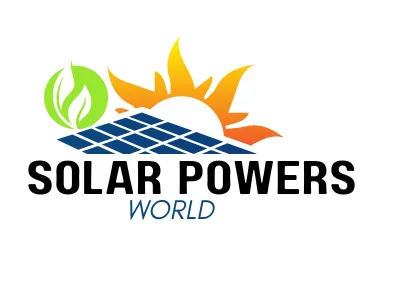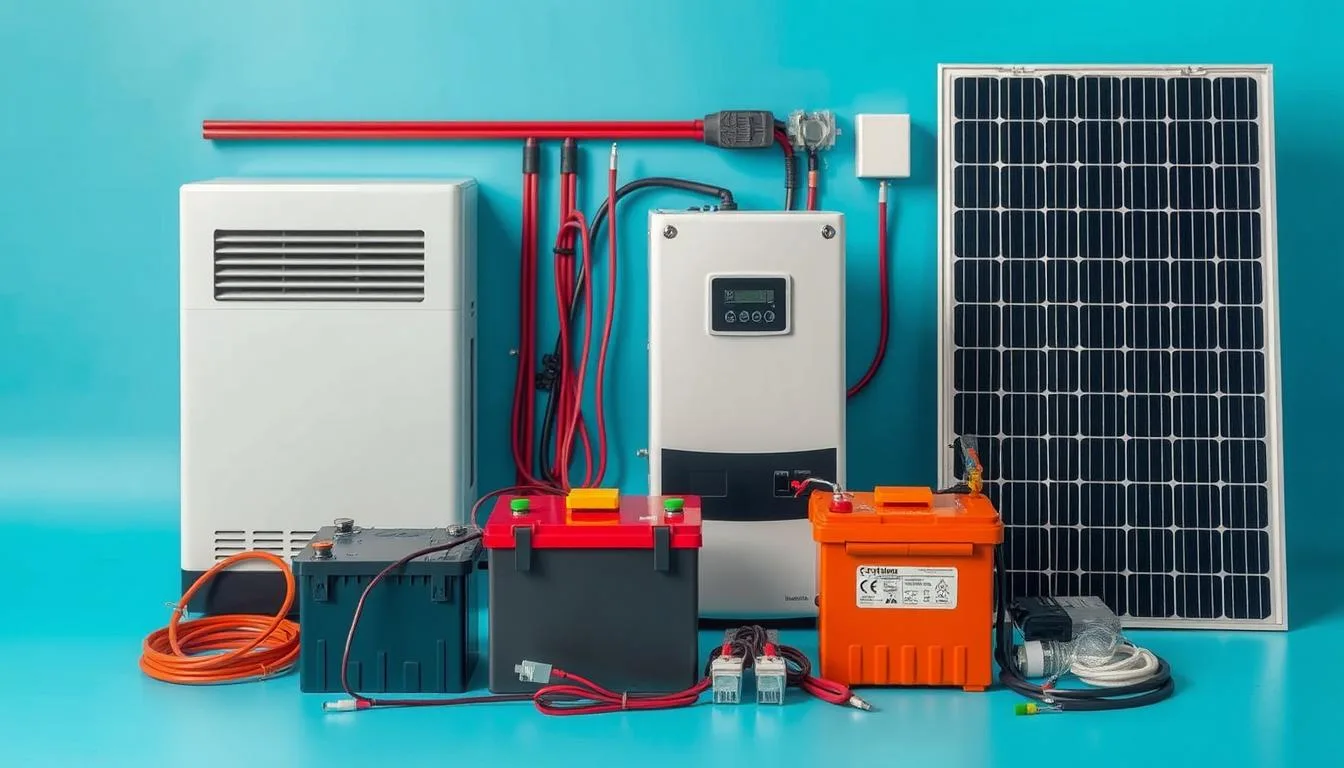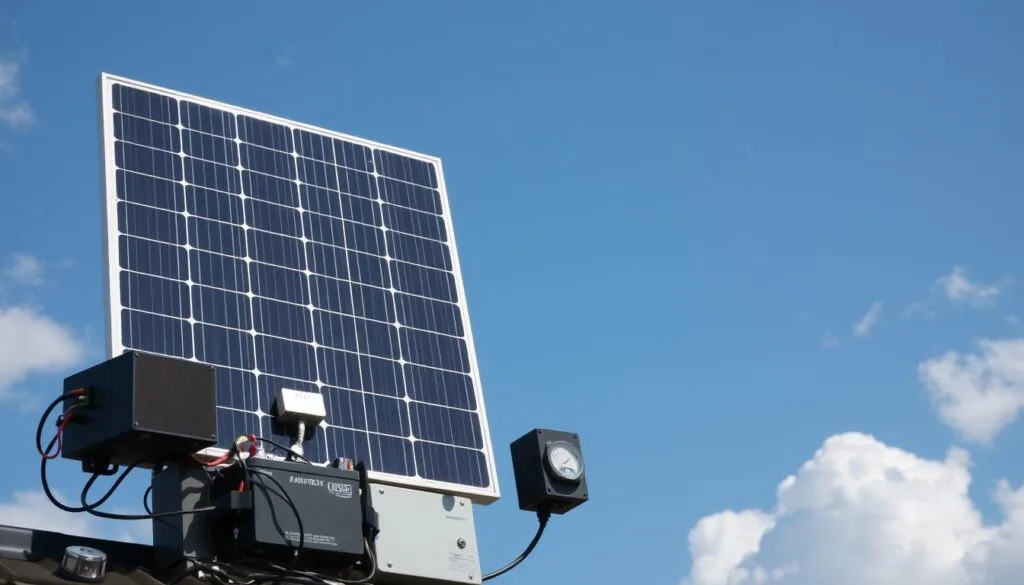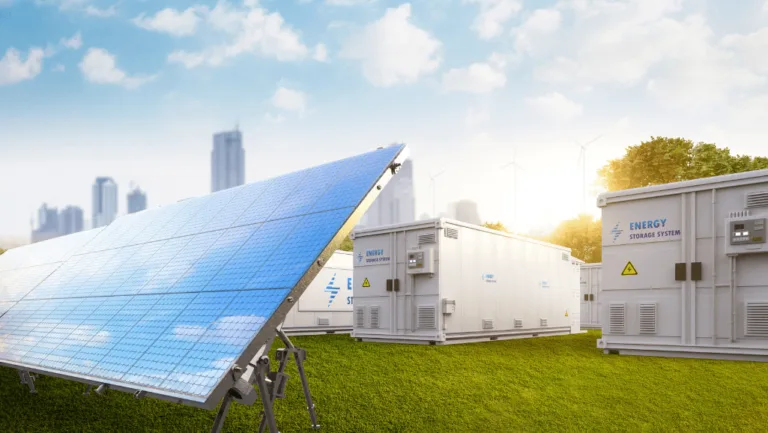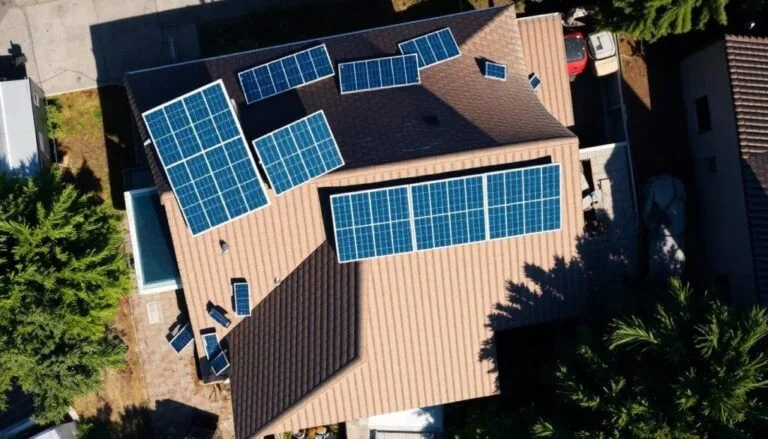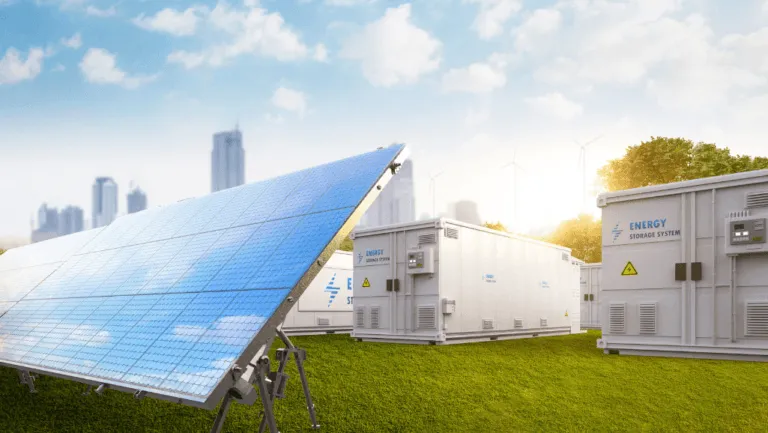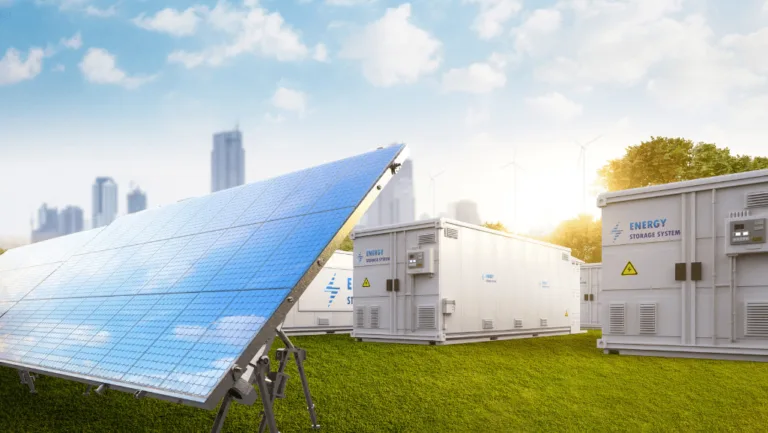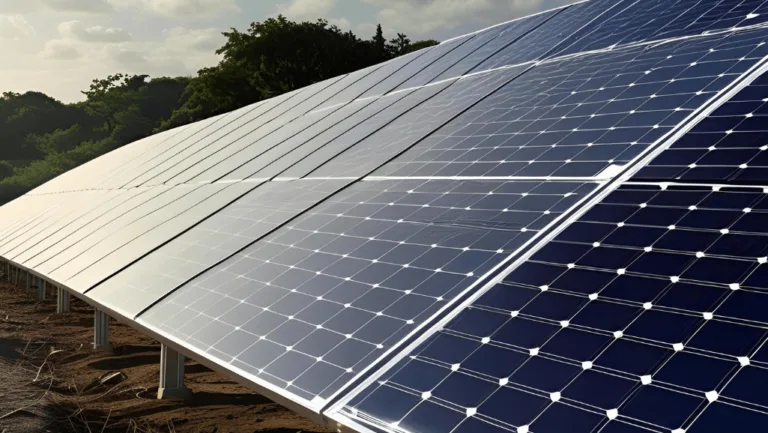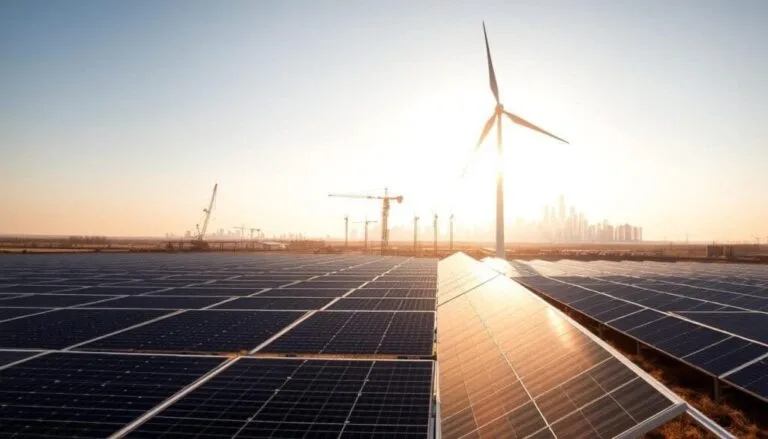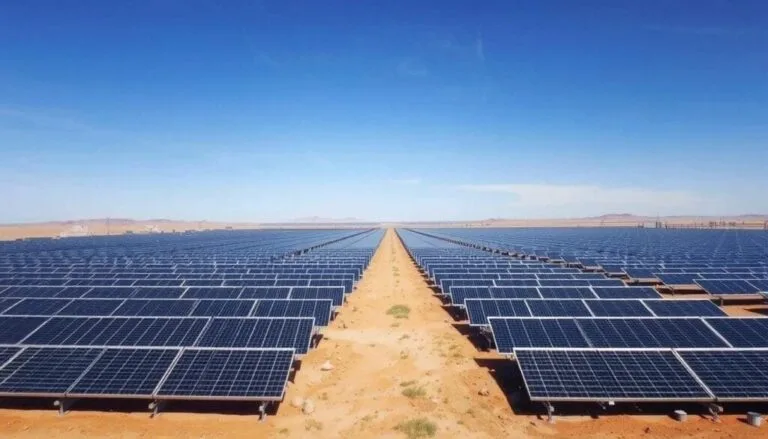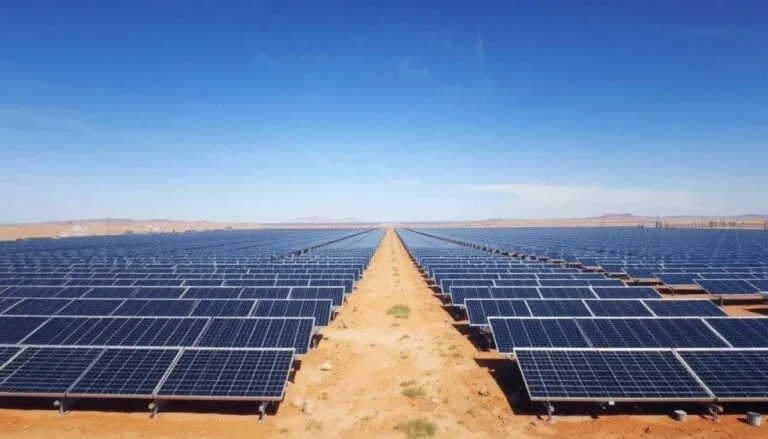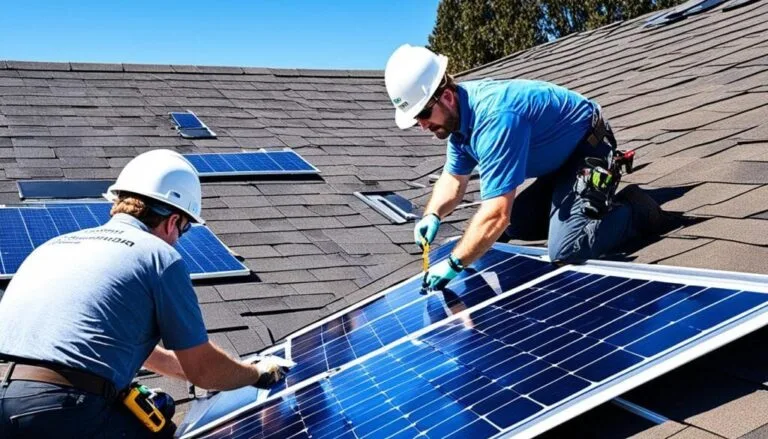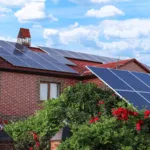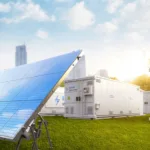Starting with solar energy means learning the basics. A basic solar power system is a great start for beginners. It includes solar panels, batteries, charge controllers, and inverters. These parts work together to make a small, off-grid system.
Choosing the right basic solar power system is key. Using the sun’s energy saves money and helps the environment. Companies like Renogy, Go Power, and AIMS offer quality solar gear. They help you find systems that fit your needs and budget.
Now, with new solar panels like monocrystalline and polycrystalline, you can pick what works best for you. These options are efficient and affordable.
Key Takeaways
- Basic solar power systems feature solar panels, batteries, charge controllers, and inverters as core components.
- Understanding the role and selection of each component is crucial for a successful simple solar panel setup.
- Renewable energy novices should focus on solar energy starter kits for an accessible entry into solar adoption.
- Choosing the right equipment involves balancing performance with cost-effectiveness, supported by reputable solar brands.
- Inverters are key in transforming the harnessed DC solar energy into appliance-friendly AC power.
- Professional guidance or reliable resources like beginner solar power guides can significantly enhance the installation process and system performance.
Understanding the Basic Solar Power System Components
Starting with an introductory solar power system means learning about its key parts. This guide is for those new to solar panels for beginners. It helps you use solar energy with an easy solar power installation. Each part is crucial for the system to work well and efficiently.
The Role of Solar Panels in Energy Collection
Solar panels are key in catching solar energy. Top solar panels, like Monocrystalline silicon, work best but cost more than others. Since panels are the priciest part, knowing they last 25 years helps understand the system’s long-term value.
The Importance of Batteries for Energy Storage
Batteries store solar power for use at night or during outages. Lithium-ion batteries are best for their power and long life. Make sure to keep deep cycle batteries charged over 70% to make them last longer.
Regulators and Their Function as the System’s Brain
Regulators keep batteries from overcharging or draining. They must handle the solar panel’s full current to work well in different conditions. This helps manage the power increase from sunlight and temperature changes.
How Inverters Convert Solar Power for Appliance Use
Inverters change the low DC power in batteries to the AC power needed by appliances. They usually have a ten-year warranty. It’s important they can handle power surges to work well and safely.
Knowing these parts helps those setting up their introductory solar power system make smart choices. The key to a good setup is finding the right balance between cost, efficiency, and how long it lasts.
Choosing the Right Type of Solar Panels
When picking a simple solar panel setup, it’s key to choose the right panel type. This choice balances cost, efficiency, and how long they last. Monocrystalline and polycrystalline panels are two main types, each with its own benefits for your solar energy needs.
Monocrystalline vs. Polycrystalline Panels
Monocrystalline panels are sleek black and have high efficiency rates of 17-22%. They’re great for small roofs or high power needs. They cost more at first but can pay back over time, especially with solar incentives.
Polycrystalline panels are blue and more affordable, with efficiencies of 15-17%. They’re a good choice for those on a budget. They’re not as efficient but are a solid start into solar energy.
Efficiency and Longevity: What to Consider
How long solar panels last is crucial for getting your money’s worth. Both types usually come with a 25-year warranty and stay efficient for a long time. Monocrystalline panels last a bit longer, keeping up to 84% efficiency after 25 years.
Efficiency also means how well panels work in real life, like in different temperatures and sunlight. Monocrystalline panels handle heat well, so they work better in warm places.
Understanding the differences between solar panel types can help you decide. Here’s a detailed comparison:
| Feature | Monocrystalline | Polycrystalline |
|---|---|---|
| Color | Black | Blue |
| Efficiency | 17-22% | 15-17% |
| Cost | Higher | Lower |
| Warranty Period | 25 years | 25 years |
| Space Efficiency | Higher (300W-400W) | Lower |
| Longevity (Post 25 years efficiency) | Approx. 84% | Approx. 80% |
Choosing the right panel type is key for anyone starting with solar energy. Each type has unique benefits for different needs and budgets. For more tips on picking the best panels, check out choosing high-quality solar panels for your needs.
Optimizing Battery Storage for Solar Energy
Starting a DIY solar power system means you need to know about solar power battery storage. It’s key to keep your system running well and make it last longer. You should look into the different battery types, how long they last, and the cost of storing energy.
Types of Batteries Suitable for Solar Systems
There are many battery types for solar systems, each with its own benefits. The right choice depends on how much energy and power you need. This affects how well your system works when the sun isn’t shining or at night.
- Lithium-ion Batteries: These batteries are very efficient. They have a lot of energy capacity, making them perfect for homes and businesses.
- Lead-acid Batteries: These are affordable and reliable. They’re great for big solar setups where saving money is important.
- Nickel-based Batteries: These batteries last a long time and work well in certain situations. They’re not as common but very effective.
Understanding Depth of Discharge and Battery Life
Depth of Discharge (DoD) is key to making your solar power battery storage last longer and work better. DoD is how much of the battery’s capacity has been used. Using less of the battery can make it last longer.
Lithium-ion batteries can handle a deeper DoD than lead-acid ones. This makes them great for solar setups where saving space and weight matters. Knowing how to manage DoD helps you get the most out of your investment. It also ensures you always have power when you need it.
This section showed you how to pick the best batteries for your solar project and how to handle battery discharge. By choosing the right batteries and managing discharge well, you can have a solar system that’s reliable and lasts a long time.
Regulating Your Solar Power: The Role of Controllers
Solar charge controllers are key for keeping a solar system running well. They are especially important for beginners in solar power. It’s crucial to know how they work in a solar setup.
Solar panels make more voltage than batteries can take safely. For example, a “12 volt” solar panel can produce 16 to 20 volts. This is too high for a standard 12-volt battery without overcharging it. A solar charge controller lowers this voltage to safe levels, like 10.5 to 14.6 volts. This protects the battery and makes the system last longer.
There are two main types of solar charge controllers: PWM and MPPT. Each has a unique role in managing your system:
- PWM Controllers are more affordable and great for small systems. They help extend the battery’s life by reducing the voltage safely. This keeps the battery’s charge cycle healthy.
- MPPT Controllers are pricier but better for big, powerful systems. They adjust the voltage to charge batteries efficiently, boosting system efficiency by 10 to 30%.
Controllers also protect your system by stopping reverse current at night, preventing over-voltage, and keeping batteries within safe temperatures. They manage charging in three stages: bulk, absorption, and float. These stages are key for keeping batteries healthy and working well.
Choosing the right solar charge controller is crucial for your system’s success. High-quality brands like Morningstar, Victron, and Renogy ensure safety and boost your solar system’s efficiency. They are a smart choice for anyone starting with solar power.
With a good solar charge controller, your system will work better and last longer. This makes your investment in solar technology a smart move for the environment and your wallet.
How Inverters Streamline Your Solar Power Usage
A solar power inverter is key in solar tech. It connects solar energy to our daily use. It changes the direct current (DC) from solar panels into alternating current (AC). This makes the electricity safe for use in homes and businesses.
Determining the appropriate inverter size and type is important. It ensures your system works well and reliably. Let’s explore the different inverters and their uses:
Determining the Appropriate Inverter Size for Your Needs
Choosing the right solar power inverter size depends on your solar panel’s wattage and your energy use. It’s important to match the inverter’s capacity with your energy needs. This prevents waste and protects your system.
The Differences Between Centralized and Micro Inverters
Centralized and microinverters both change DC to AC, but they work best in different setups. Centralized inverters are good for big systems and save money. Microinverters are better for small setups with shading or different panel angles.
| Features | Centralized Inverters | Microinverters |
|---|---|---|
| Installation Type | Suitable for large solar arrays | Optimal for smaller, fragmented installations |
| Efficiency | High overall efficiency in uniform conditions | Maximizes output from each panel individually |
| Cost | Lower upfront cost | Higher initial investment but lower maintenance costs |
| Main Benefit | Economical for bulk power generation | Reduces the impact of shading and improves panel lifespan |
This comparison shows that choosing between centralized and microinverters depends on your solar system’s layout and needs. The right choice should fit well with your solar setup. It should help you make the most of your energy and support green living.
Essential Electrical Basics: Volts, Amps, and Watts Explained
For those new to solar power, knowing the basics is key. Understanding volts, amps, and watts is crucial. This guide makes these concepts easy to grasp, helping you set up and maintain a solar power system.
Voltage (in volts) is like the pressure that moves electricity. In the U.S., homes usually have about 120V. This voltage keeps your devices safe and working right. Factories and big buildings often use higher voltages for their heavy machinery.
Amperage, or “A,” shows how much electricity flows. Think of it like water in a hose. A 3A rating means three amps are moving, which is important for knowing a device’s safe current limit.
Watts come from multiplying volts and amps. They show how much energy a device uses or a generator makes. For solar panels, knowing the wattage is key. It tells you how much energy you get per hour, affecting your system’s efficiency.
When we talk about power use and bills, we look at kilowatt-hours and kilowatts. A kilowatt means a lot of power, and kilowatt-hours measure energy over time. So, your solar system’s success is about using its power well over time.
Here’s a table to show how voltages, amperages, and wattages work with solar panels:
| Panel Output | Voltage (V) | Amperage (A) | Power (Watts) |
|---|---|---|---|
| Standard Residential Solar Panel | 120V | 14A – 24A | 200W |
| Typical Industrial Solar Panel | 200V+ | 10A – 12A | 2400W+ |
| Small Appliance Solar Panel | 18V | 12A | 216W |
Knowing these electrical basics is vital for using solar power well. With this guide, you can figure out your energy needs and pick the right solar panels. Being informed helps you switch to sustainable energy smoothly.
Solar Energy Configuration: Series vs. Parallel Connections
When setting up a solar energy system, knowing about solar panel array configurations is key. Choosing between series and parallel setups affects system efficiency and compatibility with inverters and controllers. This guide helps homeowners pick the best setup for their energy needs and space.
Matching Solar Panels to Your Home’s Energy Requirements
Every home needs a solar system that matches its energy use. You must think about roof space, energy use, and sunlight hours. Series connections boost voltage, great for high-voltage grids. Parallel connections keep voltage steady but increase current, perfect for off-grid systems. Sometimes, a mix of both is needed based on your home’s location and energy use.
Customizing Array Sets for Maximum Efficiency
For the best efficiency, a custom approach is best. Using both series and parallel connections balances voltage and current. This mix boosts performance and cuts losses from shaded panels. Series is good for areas with steady sunlight, while parallel is better for avoiding system failures.
Modern setups use MPPT controllers for better voltage handling from series panels. This is key for systems that need to send power over long distances. For big systems, a series-parallel setup helps manage voltage and current limits, making it safer and more efficient.
Choosing the right solar panel setup depends on your electrical setup, energy needs, and environment. Talking to skilled solar installers for a custom review will make sure your system works well and lasts long.
Maximizing Solar Efficiency with Charge Controllers
Choosing the right charge controller is key to boosting your solar power system’s performance. These devices are crucial for solar charge controller efficiency and prolonging solar battery life. Let’s look at PWM and MPPT controllers and how they improve your energy use.
PWM vs. MPPT: Which Controller Is Right for You?
Pulse Width Modulation (PWM) and Maximum Power Point Tracking (MPPT) are the top methods for moving energy from solar panels to batteries. PWM is best for small setups because it’s simple and affordable. But for big solar arrays, MPPT is better because it can make your system up to 30% more efficient, as solar energy experts say.
When deciding between PWM and MPPT, think about your system’s size, budget, and goals. MPPT controllers, like the Flexmax series from Fangpusun, are top performers with efficiency over 99%. They make sure you lose little energy and get the most power, adjusting to light changes.
Ensuring Safe Charging Practices to Prolong Battery Life
How long your solar batteries last depends on the charge controller’s ability to control voltage and watch the temperature. Advanced MPPT controllers have smart battery management systems. They keep your batteries safe by changing charge rates based on the battery’s state and the environment, helping to prolong solar battery life.
Adding high-end MPPT controllers, such as Flexmax by Fangpusun, to your system boosts energy use and fits with smart home tech for better automation and efficiency. These controllers are built tough and manage heat well, working well even in tough conditions. They’re key for a reliable and efficient solar setup.
| Feature | PWM Controllers | MPPT Controllers |
|---|---|---|
| Efficiency | Standard | High (up to 30% more efficient) |
| Cost | Lower | Higher |
| Best Used For | Smaller systems | Larger and complex systems |
| Technological Integration | Limited | Advanced (IoT compatibility) |
| System Design Flexibility | Low | High |
For those wanting to get the most from their solar power, upgrading to MPPT controllers is a smart move. These controllers don’t just improve solar charge controller efficiency. They also help prolong solar battery life, leading to a greener energy future.
Planning Your DIY Solar Power System Installation
Starting a DIY solar power system is more than saving money. It’s about becoming independent and using clean energy. With a good plan and a detailed guide, you can make a power source that works well and saves money. Knowing about system types, size, and financial help is key to success.
A Step-by-Step Guide to Setting Up Your System
Begin your DIY solar project by figuring out how much energy you need. This will help you decide on the system size and type, like grid-tied or off-grid. Think about where to put your solar panels for the best sunlight. Get any needed permits before starting your project.
Mount the solar panels, set up the inverter, and wire everything together. Using a trusted solar power installation guide can really help.
Tips for a Successful and Cost-Efficient Installation
- Pick a good solar inverter, like the SolarEdge Home Wave Inverter or Tesla Solar Inverter, to get the most from your panels.
- Look into community or shared solar programs if your place isn’t great for solar systems.
- Check out financial help and rebates from local, state, and federal levels to cut costs.
- Use online tools to find the best spot and size for your solar panels.
To make sure your solar project is a smart money move, figure out the return on investment (ROI). The ROI is (Net Return on Investment / Cost of Investment) × 100. Being smart with money and tech makes your solar energy project a great choice. It’s a smart way to save money and use energy wisely.
Real-World Applications of a Basic Solar Power System
Solar energy is becoming more popular worldwide. It’s key to know how a basic solar power system works, especially for homes. Solar power is a great way to meet daily energy needs. It shows how solar energy can be used in many ways at home, making it sustainable.
Appliances Compatible with a Basic Solar Setup
Home solar systems can power many important devices. Solar-powered devices work well with a basic 12V system, making energy use efficient. Here are some appliances that work well with solar power:
- LED Lighting: LED technology saves a lot of energy, making solar a great choice for lighting.
- Charging Stations for Phones and Laptops: These devices use little power, so a basic solar system can handle them.
- Mini Fridges: Some energy-efficient models can run on solar power.
- Solar Water Heating Systems: These systems heat water without costing a lot.
- Solar Powered Fans and Portable Air Coolers: These are great for staying cool in hot places.
Limitations and Considerations for Low Power Systems
Solar power has many benefits, but it also has limits. Big appliances like air conditioners and stoves use too much power for basic solar setups. Here are some things to think about:
- Energy Storage Capacity: Basic systems might need more batteries to store enough power for heavy use.
- Sunlight Dependency: Solar power changes with the weather, so you might need a backup in cloudy areas.
- Initial Investment: Setting up a solar system at home can be expensive, even though costs are going down.
Using solar power is good for the planet and helps us rely less on others for energy. Knowing what solar power can and can’t do helps homeowners make smart choices about using it in their lives.
| Appliance Type | Power Requirement | Compatibility with 12V Solar System |
|---|---|---|
| LED Lighting | Low | Highly compatible |
| Mobile and Laptop Charging | Low | Highly compatible |
| Mini Fridges | Moderate | Selected models only |
| Solar Water Heaters | Moderate | Compatible with adjustments |
| Portable Air Coolers | Moderate | Compatible |
Conclusion
As we conclude our deep dive into simple solar power solutions for homes, we highlight the vast benefits they bring. These systems use advanced photovoltaic (PV) panels to harness the sun’s energy. This can pay for itself in 1 to 4 years and last up to 30 years, showing solar energy’s lasting value.
Each part of a solar power system is crucial for turning and managing solar energy. This makes solar power flexible for many uses, from running home devices to helping farms with low yields. It also offers big environmental benefits.
The U.S. Department of Energy is pushing for more renewable energy, including solar. They focus on recycling PV panels and managing the system’s impact on the environment. Despite challenges, solar energy’s huge potential shows it’s key to our energy future.
Solar panel costs are dropping, and they’re getting more efficient. This makes more people interested in them. With more money and support, solar tech is improving fast. It’s now used in many things, from cars to cooling systems, promising a bright future.
With ongoing innovation, solar power will keep leading our move to a greener, smarter energy world.

